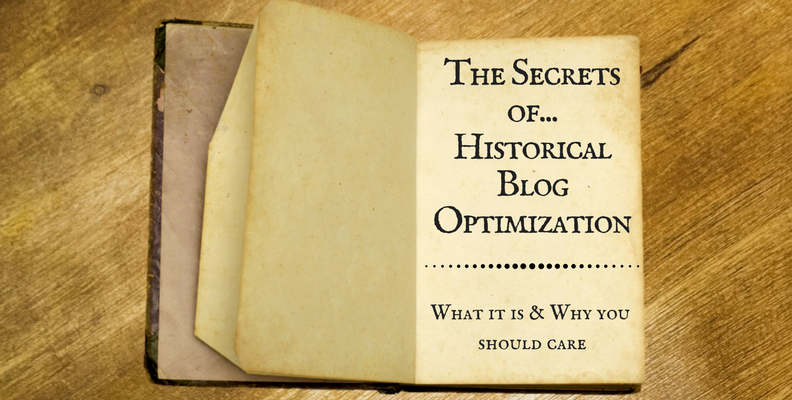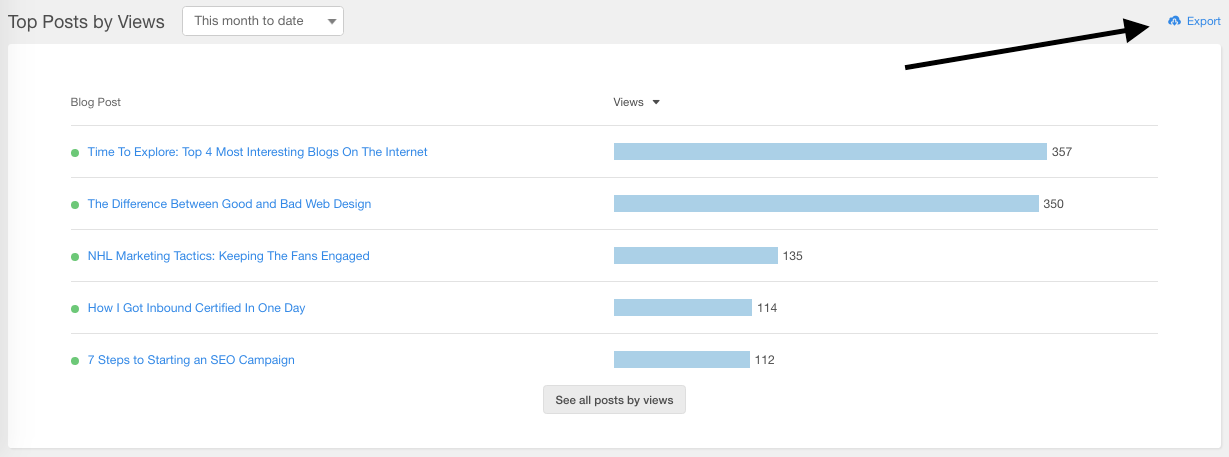Historical Blog Optimization: Why You Should Be Updating Your Evergreen Content


What if I told you that I had a new(ish) content strategy that you can use in your content creation efforts that can help you generate more leads with less work?
Before I spill the beans on this new strategy, think about this example. If you wanted to increase traffic to your site by about four or five times, you wouldn't be writing four times more blogs. You wouldn't be creating four times more premium content offers either. That's unrealistic and unattainable.
Instead of becoming a content creation sweatshop, your company can generate more leads by updating, revising, and re-optimizing your blogs. You can do this when you determine content needs to be updated or when a well-performing blog post is deemed 'too old' to be relevant.
What is Historical Blog Optimization?
Historical blog optimization is the ongoing practice of optimizing older blog content so it's fresh, up-to-date, and has the ability to generate more traffic and conversions than it has already.
This new(ish) marketing strategy is meant to make your content go further than it has before. Instead of working harder on your firm's content creation efforts, historical blog optimization will help you work smarter.
No longer is it enough to write blogs for the sake of publishing them. This is due to the rise of content marketing and too many competitors all vying for their audience's attention. The supply of content is quickly outpacing the demand. Even further, one can argue that the costs of writing a blog article can be higher than what is received from the end product, a published blog post.
According to Forrester Research, nearly half of all blogging content created by enterprises is going completely unused. How do you get more out of your blogging efforts?
Let's examine how you can utilize historical blog optimization.
How to Historically Optimize Old Posts
It should be noted that when I say 'optimize,' I mean that these posts and articles should be unpublished and republished as new posts. I do not mean that these old posts only need a few more keywords or that they need alt-text. Those things should already be happening in your blogging efforts.
Historical blog optimization includes:
- Unpublishing a piece of content and republishing it to show a more recent display date in Google's search results
- Evaluating whether or not content needs to be refreshed to speak to new trends, industry updates, or to revise inaccuracies
Understanding Google's Display Date & "Fresh" Content
When you publish a web page or blog post, Google will display the date it was published in your search results. Looking at the screenshot below for the first search result for the query "historical blog optimization."

You can see that this article was published on June 17th of 2015. That publishing time is close enough to today's date to consider this blog to be considered up-to-date.
To understand why Google's display date is important, consider these questions: When was the last time you read a blog that was published in 2008? If you were to see a blog from that year in your search results, would you click on it? Even more, would you consider that information valid and up-to-date?
It's also important to understand the Google 'likes' fresh content. In fact, some SEO experts consider "freshness" to be one of the most important ranking factors for Google's search algorithms. For more information about fresh content and how if affects SEO, check out this great article from Moz.
Updating Posts for Accuracy & Relevant Industry Changes
Obviously, your content needs to be accurate. That much should be a given.
If your statistics are based on older reports or resources that have been updated, you should consider changing that link to show the more recent source. Simply put, if it makes sense to go back and revise your content, do it.
I'm not telling you to go back through all of your blog posts and rework them. I'll go through how to decide what blogs you need to revise later in this article.
Pro tip: It's a good idea to double check all links in your article to make sure you're not linking to pages with 404 errors.
How to Know What Posts to Optimize
To figure out what posts you need to optimize, you need to have a basic understanding of Microsoft Excel. Navigate to the blog section of your HubSpot portal, and go to the "Analyze" section. Scroll down to the box that says "Top Posts by Views" and click on the little "Export" link on the left side. See the image below.

Once you export that data, look for ways to interpret it. Sort all your blogs by CTA clicks, CTA click rate, page views, and any other data you wish to analyze. Look for the blogs that are receiving high amounts of traffic, and see if you can identify any major keywords people are using to find your blog.
After you determine what keywords to use, make sure you match the keywords in the call-to-action at the end of your blog post. This way, you're speaking to the reason why your reader clicked on your blog the expectations of your reader in the title, in sub-headers, and in the CTA.
For more details on how to make your blog generate more leads, check out this great article that covers how to historically optimize a blog for SEO.
Final Word
Content creation is a huge area of emphasis for modern companies of all sizes, and blogging is a massive component of content creation. However, certain blogs will, inevitably, perform better than others.
You can make your blogs generate more leads without increasing the number of high-quality published blogs. Instead of writing more, digital marketers and content creators can look at the data of their already-published articles. From there, they can make small tweaks and revisions to boost the number of leads generated from blogging efforts.
Don't work harder on content creation when you can work smarter. Bring in more traffic & more leads from already-written blog content with Historical Blog Optimization.
